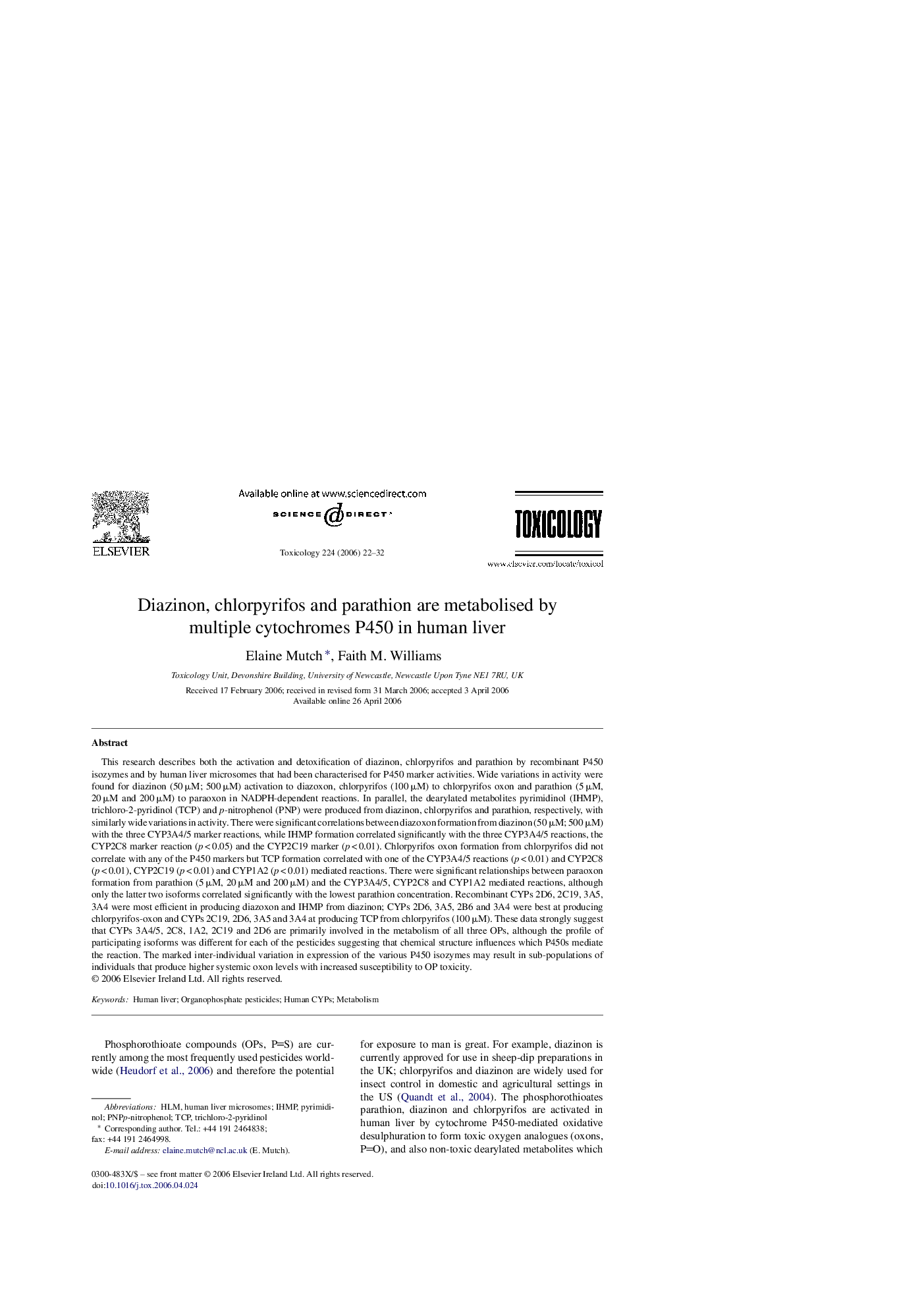| کد مقاله | کد نشریه | سال انتشار | مقاله انگلیسی | نسخه تمام متن |
|---|---|---|---|---|
| 2598206 | 1562432 | 2006 | 11 صفحه PDF | دانلود رایگان |

This research describes both the activation and detoxification of diazinon, chlorpyrifos and parathion by recombinant P450 isozymes and by human liver microsomes that had been characterised for P450 marker activities. Wide variations in activity were found for diazinon (50 μM; 500 μM) activation to diazoxon, chlorpyrifos (100 μM) to chlorpyrifos oxon and parathion (5 μM, 20 μM and 200 μM) to paraoxon in NADPH-dependent reactions. In parallel, the dearylated metabolites pyrimidinol (IHMP), trichloro-2-pyridinol (TCP) and p-nitrophenol (PNP) were produced from diazinon, chlorpyrifos and parathion, respectively, with similarly wide variations in activity. There were significant correlations between diazoxon formation from diazinon (50 μM; 500 μM) with the three CYP3A4/5 marker reactions, while IHMP formation correlated significantly with the three CYP3A4/5 reactions, the CYP2C8 marker reaction (p < 0.05) and the CYP2C19 marker (p < 0.01). Chlorpyrifos oxon formation from chlorpyrifos did not correlate with any of the P450 markers but TCP formation correlated with one of the CYP3A4/5 reactions (p < 0.01) and CYP2C8 (p < 0.01), CYP2C19 (p < 0.01) and CYP1A2 (p < 0.01) mediated reactions. There were significant relationships between paraoxon formation from parathion (5 μM, 20 μM and 200 μM) and the CYP3A4/5, CYP2C8 and CYP1A2 mediated reactions, although only the latter two isoforms correlated significantly with the lowest parathion concentration. Recombinant CYPs 2D6, 2C19, 3A5, 3A4 were most efficient in producing diazoxon and IHMP from diazinon; CYPs 2D6, 3A5, 2B6 and 3A4 were best at producing chlorpyrifos-oxon and CYPs 2C19, 2D6, 3A5 and 3A4 at producing TCP from chlorpyrifos (100 μM). These data strongly suggest that CYPs 3A4/5, 2C8, 1A2, 2C19 and 2D6 are primarily involved in the metabolism of all three OPs, although the profile of participating isoforms was different for each of the pesticides suggesting that chemical structure influences which P450s mediate the reaction. The marked inter-individual variation in expression of the various P450 isozymes may result in sub-populations of individuals that produce higher systemic oxon levels with increased susceptibility to OP toxicity.
Journal: Toxicology - Volume 224, Issues 1–2, 5 July 2006, Pages 22–32